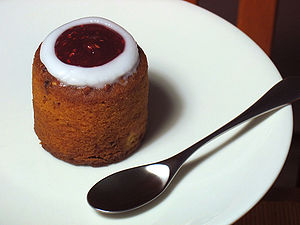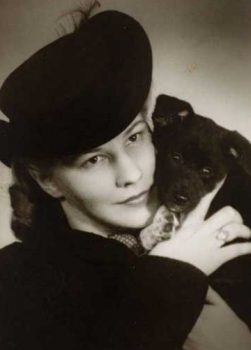Search results for "jarkko laine prize"
Kjell Westö: Gå inte ensam ut i natten [Don’t go out into the night alone]
23 October 2009 | Mini reviews, Reviews
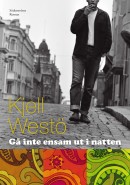 Gå inte ensam ut i natten
Gå inte ensam ut i natten
[Don’t go out into the night alone]
Helsinki: Söderströms, 2009. 604 p.
ISBN 978-951-52-2609-9
25 €, hardback
Finnish translation (by Katriina Savolainen): Älä käy yöhön yksin
Helsinki: Otava, 2009. 604 p.
ISBN 978-951-1-23833-1
25 €, hardback
This novel completes Kjell Westö’s Helsinki series and is his tenth book. As is the case with the three earlier books in this series (Drakarna över Helsingfors [‘The kites over Helsinki’], 1994, Vådan av att vara Skrake [‘The perils of being a Skrake’], 2000, and Där vi en gång gått [‘Where we once walked’], 2006, all also translated into Finnish) this is a character-driven, nostalgia-laden story that spans several decades. The central factor is music: in the 1960s three young people from different backgrounds become friends and record a single that ought to have been a huge hit, but because the song fades into obscurity, the circle of friends breaks up. In the latter part of the novel, a young man begins to investigate what became of the members of the trio and realises that his own life is linked to theirs. Westö (born 1961) writes remarkable experiential prose that brings the reader close to the characters. The retro setting may be a bit much for some: the avalanche of details feels rather excessive in places. Där vi en gång gått was awarded the Finlandia Prize in 2006. Another of Westö’s novels, Lang (2002), was published in England under the same title in 2005.
November favourites: what Finland read
19 December 2013 | In the news

Best-selling: ‘Singing songbook’, edited by Soili Perkiö
The November list of best-selling fiction and non-fiction, compiled by the Finnish Booksellers’ Association (lists in Finnish only) features thrillers, new Finnish fiction and biographies.
Number one of the Finnish fiction list was the latest thriller by Ilkka Remes, Omertan liitto (‘The Omerta union’, WSOY). It was followed by the latest novels by Tuomas Kyrö, Kunkku (‘The king’, Siltala), and Kari Hotakainen, Luonnon laki (‘The law of nature’).
The translated fiction list consisted of best-selling crime writers: Dan Brown, Liza Marklund, Jo Nesbø. The Nobel Prize-winning author Alice Munro was number seven – and one of her books was at the top of the paperback fiction list.
Singing has inspired book-buyers so much that Soiva laulukirja (‘Singing songbook’, Tammi), edited by Soili Perkiö, was number one on the list of the books for children and young people: the push of a button delivers piano accompaniment to any of 50 Finnish songs – a clever idea. Perhaps it is popular with parents as entertainment for their kids on long car journeys?
The non-fiction list featured biographies of Jorma Ollila of Nokia fame, the banking tycoon Björn Wahlroos, Lauri Törni aka Larry Thorn who fought in three armies – those of Finland, Nazi Germany, and the US (he died in Vietnam in 1965) – an ice-hockey boss, Juhani Tamminen, and the sprinter Usain Bolt.
Notes for an unwritten autobiography
15 September 2011 | Fiction, Prose
Extracts from the novel William N. Päiväkirja (‘William N. Diary’, Otava, 2011). Interview by Soila Lehtonen
Paris, 15 November 1897
Constance probably bought this notebook for housekeeping purposes, but forgot it when she left, so I shall take it for my use, and I am not going to tear a single page, because the paper is of good quality and the covers are made of calico. When I write in a small hand there is plenty of room for the text, and when I write in Swedish Constance will not understand, if she chances to see the notebook. She has promised to visit once or twice a week and continue to bring food and do the cleaning (we cleared up the differences of opinion that were related to her departure), even though she has now moved and married a retired officer, having been my housekeeper for nearly 30 years. The laundry she has delegated to Madame L., who lives in this house, although that lady is intolerably nosy and talkative, and she has six smutty children. I have decided to write my autobiography, so that posterity shall receive a full and proper impression of my work. (Let Prof. Schwendener from Berlin and Dr Louis Pasteur be content with minor roles!) I shall not begin until tomorrow, for today I intend to study the specimens of South American lichens Prof. D. has sent if there is enough daylight. More…
Mari Kujanpää: Minä ja Muro [Muro and me]
28 January 2010 | Mini reviews, Reviews
 Minä ja Muro
Minä ja Muro
[Muro and me]
Kuvitus [Ill. by]: Aino-Maija Metsola
Helsinki: Otava, 2009. 207 p.
ISBN 978-951-1-23418-0
15.10 €, hardback
The heavy themes of this children’s novel, winner of the 2009 Finlandia Junior Prize, have provoked discussion of who its target audience should be. Lauha is a 9-year-old girl who is considered an oddball at school; her classmates claim that she smells bad. Within her own family she’s an outsider. Her little brother’s serious illness has troubled the family for a long time, and even when he gets better her parents don’t know how to listen to Lauha, and their negligence verges on physical violence. But playing with Muro, her teddy bear, eases Lauha’s troubles, and luckily she finds a soul sister in Heta, the new school intern. Mari Kujanpää (born 1976) uses language suitable for a child’s state of mind in a very creative way. Muro ja minä is difficult for a child to read on his/her own, and would work best read aloud and discussed in a group of children or as a book for adult caregivers. The black and white illustrations are by Aino-Maija Metsola (born 1983), whose previous work includes designing fabrics for Marimekko.
Let us eat cake
4 February 2010 | This 'n' that
Here at Books from Finland central we’re celebrating, with the one Finnish literary anniversary that involves its own dedicated cake.
The fifth of February marks the birthday of the poet J.L. Runeberg (1804–1877) – writer, among many other things, of the Finnish national anthem (actually unofficial, as there’s no mention of such a thing in the legislation), which he wrote in Swedish, Vårt land (in Finnish, Maamme). More…
Favourites in April: what Finland read
8 May 2013 | In the news
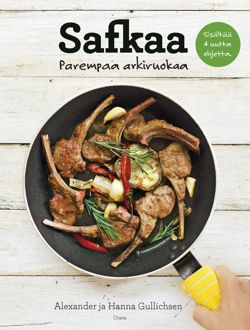 In April number one on the list of best-selling Finnish fiction titles, compiled by the Finnish Booksellers’ Association, was Seppo Jokinen’s crime novel Vihan sukua (‘Akin to hate’, Crime Time). The winner of the 2012 Finlandia Prize for Fiction, Ulla-Lena Lundberg’s Is (‘Ice’), still holds second place.
In April number one on the list of best-selling Finnish fiction titles, compiled by the Finnish Booksellers’ Association, was Seppo Jokinen’s crime novel Vihan sukua (‘Akin to hate’, Crime Time). The winner of the 2012 Finlandia Prize for Fiction, Ulla-Lena Lundberg’s Is (‘Ice’), still holds second place.
Pertti Jarla seems to have secured his place on the best-seller list: his latest serial comics book about the inhabitants of the city of Fingerpori (‘Fingerborg’, Arktinen Banaani), Lääkärileikit (‘Playing doctors’) was number three and the album Fingerpori 6 number four.
Paulo Coelho ruled the translated fiction list with his Manuscript Found In Accra. There are more people who find his books fascinating than there are people who don’t.
At the top of the non-fiction list remained, for the third time now, Kaiken käsikirja (‘Handbook of everything’, Ursa) by astronomer and popular writer Esko Valtaoja; as it doesn’t provide the reader with instructions for cooking, perhaps buyers went on to buy number two, Safkaa: parempaa arkiruokaa (‘Grub: better food for weekdays’, Otava) by Alexander and Hanna Gullichsen. Last year’s big social-media hit hails from this book: avocado pasta (chili, lime, basil, garlic, spaghetti, parmesan).
Safka, incidentally, comes from the Russian word zavtrak, breakfast. (The title of the book could also have been Sapuskaa…, the word also means ‘grub’, from the Russian word zakuska, hors d’oeuvres.)
Grim(m) stories?
30 April 2010 | Letter from the Editors
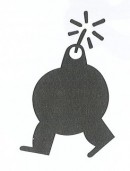 ‘There’s not been much wit and not much joy, there’s a lot of grimness out there.’
‘There’s not been much wit and not much joy, there’s a lot of grimness out there.’
This comment on new fiction could have been presented by anyone who’s been reading new Finnish novels or short stories. The commentator was, however, the 2010 British Orange Prize judge Daisy Goodwin, who in March complained about the miserabilist tendencies in new English-language women’s writing. More…
A walk on the West Side
16 March 2015 | Fiction, Prose
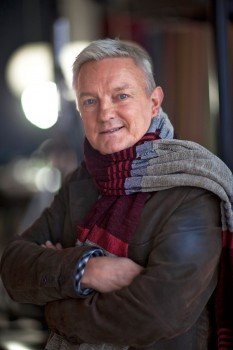
Hannu Väisänen. Photo: Jouni Harala
Just because you’re a Finnish author, you don’t have to write about Finland – do you?
Here’s a deliciously closely observed short story set in New York: Hannu Väisänen’s Eli Zebbahin voikeksit (‘Eli Zebbah’s shortbread biscuits’) from his new collection, Piisamiturkki (‘The musquash coat’, Otava, 2015).
Best known as a painter, Väisänen (born 1951) has also won large readerships and critical recognition for his series of autobiographical novels Vanikan palat (‘The pieces of crispbread’, 2004, Toiset kengät (‘The other shoes’, 2007, winner of that year’s Finlandia Prize) and Kuperat ja koverat (‘Convex and concave’, 2010). Here he launches into pure fiction with a tale that wouldn’t be out of place in Italo Calvino’s 1973 classic The Castle of Crossed Destinies…
Eli Zebbah’s shortbread biscuits
Eli Zebbah’s small but well-stocked grocery store is located on Amsterdam Avenue in New York, between two enormous florist’s shops. The shop is only a block and a half from the apartment that I had rented for the summer to write there.
The store is literally the breadth of its front door and it is not particularly easy to make out between the two-storey flower stands. The shop space is narrow but long, or maybe I should say deep. It recalls a tunnel or gullet whose walls are lined from floor to ceiling. In addition, hanging from the ceiling using a system of winches, is everything that hasn’t yet found a space on the shelves. In the shop movement is equally possible in a vertical and a horizontal direction. Rails run along both walls, two of them in fact, carrying ladders attached with rings up which the shop assistant scurries with astonishing agility, up and down. Before I have time to mention which particular kind of pasta I wanted, he climbs up, stuffs three packets in to his apron pocket, presents me with them and asks: ‘Will you take the eight-minute or the ten-minute penne?’ I never hear the brusque ‘we’re out of them’ response I’m used to at home. If I’m feeling nostalgic for home food, for example Balkan sausage, it is found for me, always of course under a couple of boxes. You can challenge the shop assistant with something you think is impossible, but I have never heard of anyone being successful. If I don’t fancy Ukrainian pickled cucumbers, I’m bound to find the Belorussian ones I prefer. More…



